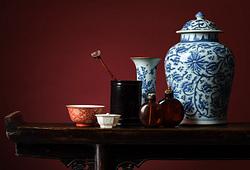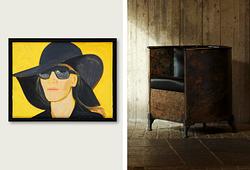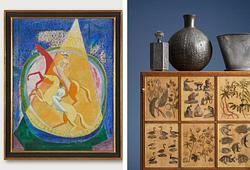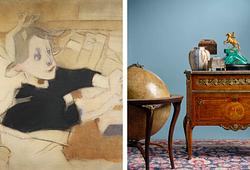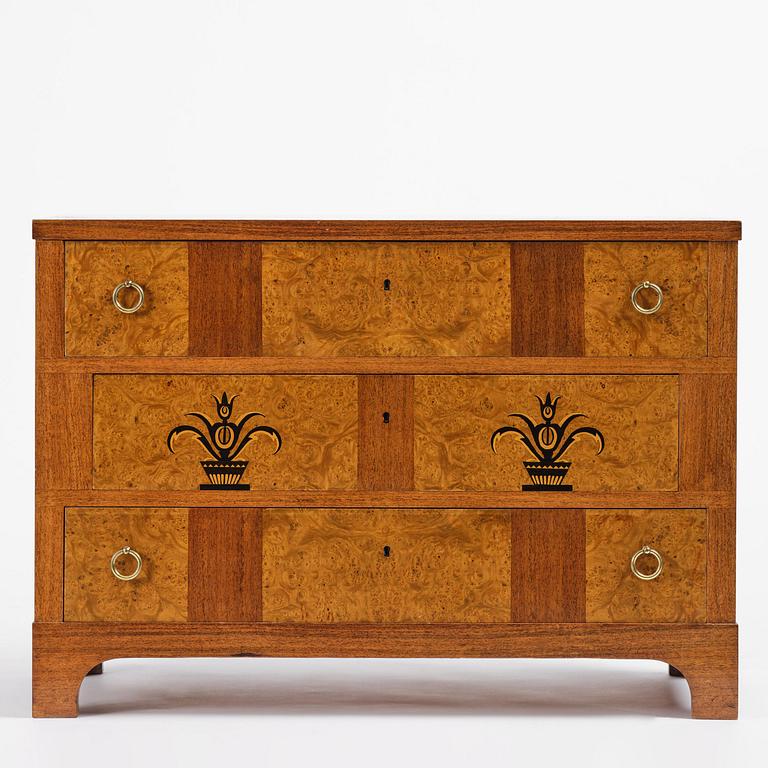Carl Malmsten
A Swedish Grace chest of drawers, variant of "Tulipanaros", Stockholm, 1930s.
Three drawers, veneered with mahogany in bands and fields, root veneer, fruitwood, and ebonised details. The front with inlays of stylised flower urns, brass handles. Height 74.5 cm, length 105 cm, depth 48 cm.
Minor wear.
Provenance
Bukowski Auktioner, Moderna Vårauktionen, 2009, cat. no. 641.
Literature
Otto Schulz (ed.), "Boet: Månadsskrift för Hemkultur, Hantverk och Konstindustri", 1930, compare p. 124.
Gustaf Munthe, "Moderna Möbler", Stockholm 1931, compare with the chest of drawers from the Stockholm Exhibition illustrated on a full page, pl. 13.
Anna Greta Wahlberg, "Carl Malmsten", Signum 1988, compare p. 81.
More information
The present chest of drawers is a somewhat smaller variant of the "Tulipanaros" that Carl Malmsten exhibited at the Stockholm Exhibition in 1930, and to which the drawing in NK's archive is dated 6 February 1930.
Designer
Carl Malmsten is one of Sweden's most famous furniture designers. Many of his furniture are considered modern design classics, for example, the cane chair "Lilla Åland", the armchair "Farmor", the sofa "Samsas", the cabinet "Herrgården", and the furniture series "Vardag".
Both "Lilla Åland" and "Vardag" adopted the ideals of "beautiful everyday goods" of the 1940s. Their neat shape and frugal design quickly became timeless interior details that we still see in many homes today.
At the beginning of his career, Malmsten interned at various carpentry workshops and studied furniture at Nordiska museet and Skansen. He had his breakthrough in 1916 when he was commissioned to design part of the interior of Stockholm's City Hall.
During his career, Malmsten collaborated with several architects, such as Ragnar Östberg, Ivar Tengbom, and Ferdinand Boberg. He designed furniture for Stockholm's concert hall and Ulriksdal castle. He participated in the now iconic hosing exhibition at Liljevalchs gallery in 1917, where the term "Beautiful everyday goods" was coined.




